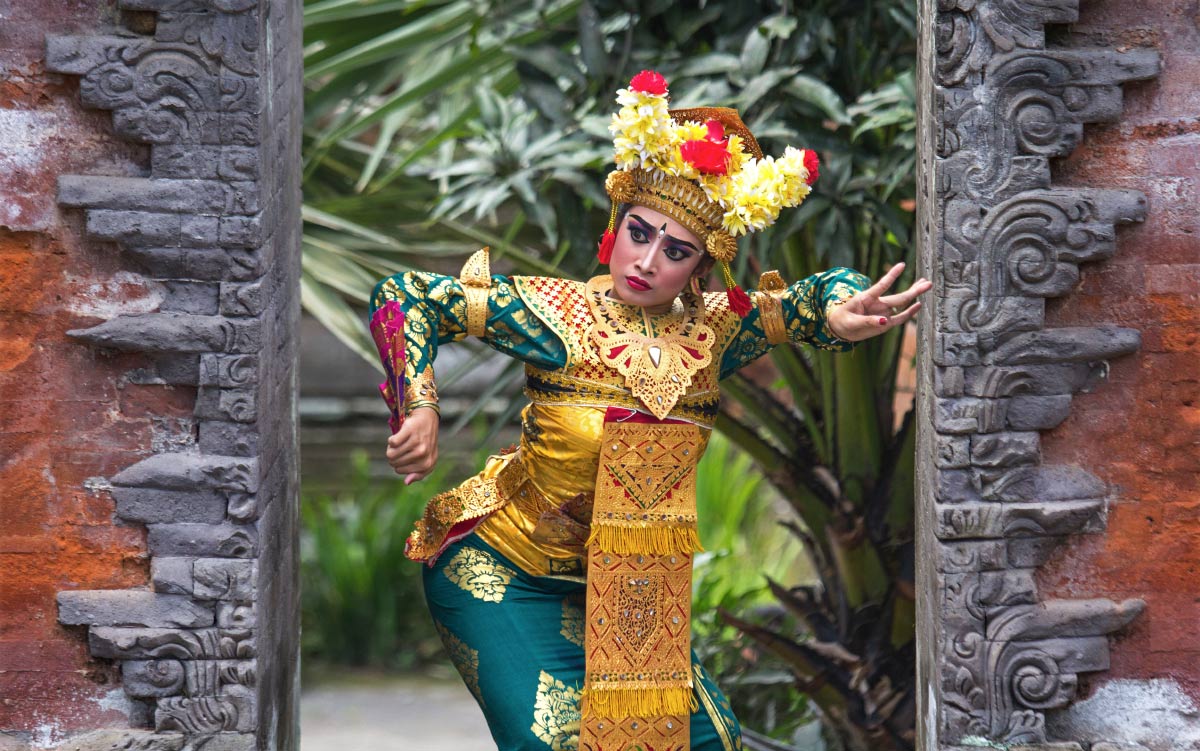With its breath-taking vistas and incomparable hospitality, it is no wonder why Bali has captivated tourists for decades. The island province paints a simpler life, a stark contrast from the hustle and bustle of the modern capital city of Jakarta. Its distinct culture and philosophy, evident from its architecture to its cuisine, presents an entirely magical world the moment you take a step in one of the world’s top destinations. Spirituality and tranquility are just some of the words that strike endless imaginings to people who have been to this mystical place, as featured in film and literature that drew inspiration from it.
The Balinese People
The real beauty of Bali lies in the heart of its people. Its population is about 3.2 million people, which features 95% of Balinese ethnicity, with the remaining minority of Chinese and Muslim descent. The Balinese are well-known for their generally amicable disposition. Most tourists and outsiders would often note the genial demeanor of the Balinese, avoiding conflict as much as possible.
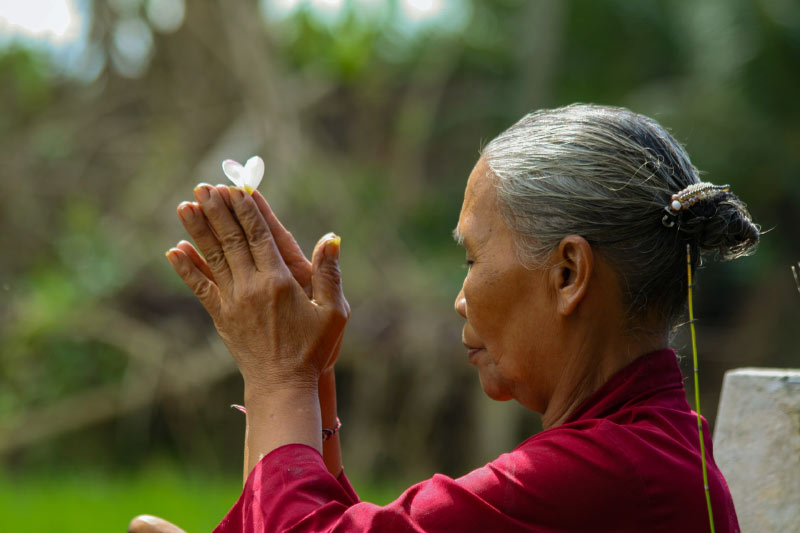
Family is integral in Balinese society. They give high regard to their children and elders, as they believe that they are closer to the gods. The Balinese people are devoutly spiritual and have a close relationship with nature, giving offerings of fruits or flowers at a waterfall, for example.
Deep Religion and Spirituality
Aptly named, ‘The Island of the Gods,” spirituality and religion thrive in Bali. The Balinese have weaved their belief system into their society and have remained intrinsic in their way of life. At present, Hinduism is the predominant religion in the province, with a small percentage of Christianity, Buddhism, and Islam.
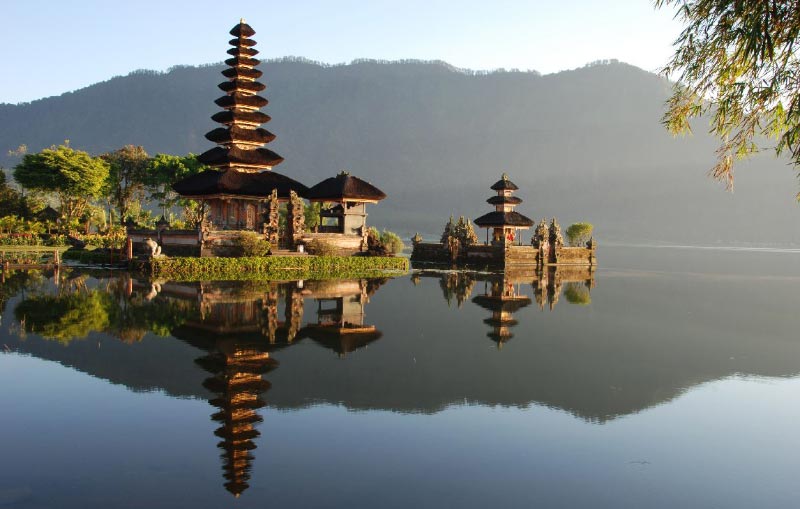
Temples are ubiquitous in the islands and are centered in every village. The Balinese have a keen sense of oneness with the universe and believe that they are part of a greater whole. Part of the Balinese philosophy obliges them to seek balance to maintain peace in their lives.
Related article: Ten Must-Visit Temples in Bali
Ecological Architecture
Architecture is arguably a distinctive trait of Balinese culture. Nature is ingrained in their design, as evidenced in their traditional houses. Tropical flora surrounds their vast yards, with palm trees, hibiscus, and jasmines endemic to the island, adorning a typical Balinese home. The use of organic, local materials, such as thatched roofing, coconut and bamboo lumber, as well as stone and clay bricks, is commonly practiced. Religion also heavily influences the Balinese aesthetic, combining their profound reverence for Hinduism and ancient Javanese roots.
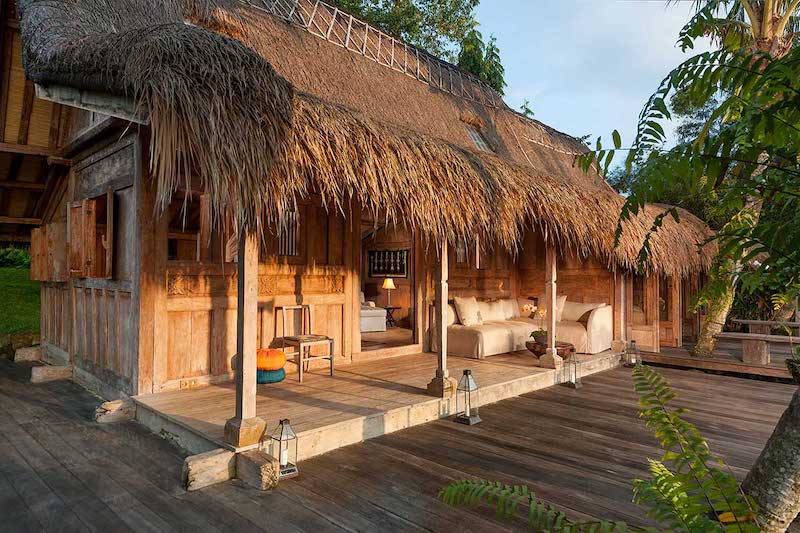
Modern Balinese design still retains much of these elements, evoking a sense of zen-like calmness and a deep connection to your surroundings. In fact, many private villas in Bali incorporate traditional Balinese design cues, making it an inviting respite for those who yearn for serenity.
Related article: Traditional Balinese Architecture as Seen in Today’s Bali Luxury Villas
Rich Art Forms
Part of Bali’s charm comes not only from its majestic natural beauty but also its flourishing artistry. Most of Bali’s art forms marry spirituality with traditional sensibilities, as seen from its elaborate paintings & sculptures to its intricate dances and performance theaters.
Local folklore and their way of life are also the typical themes in Bali’s music and artistry. ‘Wayang Kulit,’ or traditional shadow puppetry, often incorporates mythology and is valuable in teaching life lessons to the people.
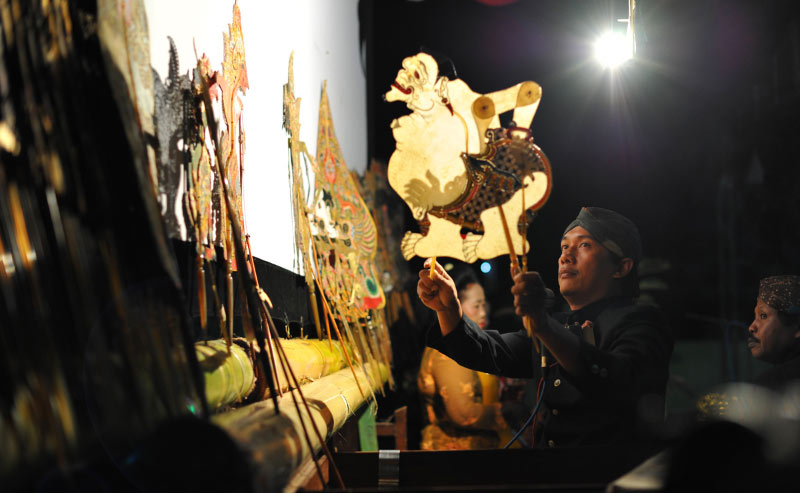
‘Gamelan,’ an essential instrument in Balinese music, produces an ethereal sound that is amplified by the use of percussive and interlocking rhythmic patterns. It entraps its listeners, sending them to a deep trance-like state of awe and wonder. Ingenuity and resourcefulness can also be seen in Balinese art. People would use black volcanic stone for carvings and statues, which they embellish on their temples.
Diverse Cuisine
If you wish to understand the true essence of Bali, you must come and try its food. Its strong and earthy flavors are derived from the island’s abundance in natural ingredients. The Balinese taste profile comprises herbs, fragrant seeds and roots, chili peppers, palm sugar, and fish paste, all derived from its lush vegetation and bountiful sea.
As with any Asian country, rice is considered a staple and accompanies much of its traditional regional fare. Sambal, a hot and spicy sauce, is one of the island’s most-prized condiments and could be used to dress up dishes for that much-needed heat.
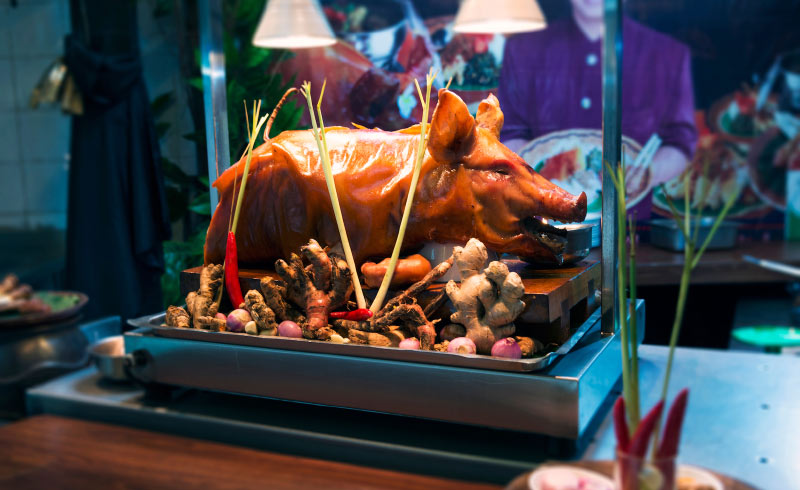
‘Nasi Goreng’ or Balinese fried rice is a rustic, yet flavorful dish served any time of the day. Spit-roasted and skewered meat dishes also dominate the Balinese table with ‘Babi Guling’ or suckling pig and ‘Sate,’ both indulgent foods that could make one’s mouth water.
Related article: Top Ten Must-Try Indonesian Food


